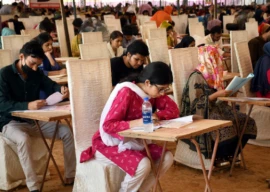
The Pakistan Cricket Board (PCB) recently announced changes to the structure of its first-class domestic competition, the Quaid-e-Azam Trophy (QAT), doing so for the fourth time in the last five years. The last structure, where 24 teams competed in two leagues, Gold and Silver, has been replaced by one where 16 teams — eight regional and eight departmental — will feature.
When the changes were made last year, the PCB had said that no more changes will be made to the domestic structure for five years and its output will be examined only after three years. However, the newly implemented system failed to last more than 12 months.
According to the new format, the top six regional and the top six departmental teams from last year’s tournament have directly qualified for this year’s edition. The departmental teams being SNGPL, NBP, PQA, Wapda, UBL and HBL, while Karachi Division, Islamabad, Rawalpindi, Peshawar, Lahore Lions and Hyderabad qualified as the top six regional sides.

The remaining four teams will look to qualify via the new qualifying round which will be played between 14 teams, six of which are departmental and eight are regional. These teams are ZTBL, SSGC, KRL, PIA, SBP, KPT, Multan, Karachi Zebras, Sialkot, Faisalabad, Lahore Eagles, Abbottabad, Bahawalpur, and Fata.
The six departmental teams will play five matches each on a single-league basis, while the eight regional teams will be divided into two pools and will play three matches each.
The top two teams from both the departments and the regions will qualify, while the remaining regional teams will play in QAT (G-II) along with DM Jamali, Larkana, AJK and Quetta. They will form a group of 10 teams competing in grade-II cricket, where three-day matches are played.
The new format seems to give less of a chance for regional and departmental sides to feature in first-class cricket as eight fewer teams will feature in the tournament. This will decrease the number of cricketers exposed to the top level, while also reducing the number of places in first-class teams for young talent to blossom.
Departments such as PIA, KPT, SSGC and ZTBL, who traditionally spend big money and provide jobs to cricketers, will stop doing so if their respective sides fail to qualify for the main league.
The cricketers will also suffer as their chances of featuring in foreign leagues depend on them playing first-class cricket.
However, the decision may yet improve the system and help it in its primary role — producing quality players for the national side. Decreasing the number of teams means increased competition and pressure, which will surely help in the development of promising youngsters.
The problem, then, lies not in the new system or indeed in any system. The problem lies in the trigger-happy way the PCB continues to implement wholesale changes to it.
This is preventing teams and departments from implementing long-term strategies, which in turn is leading to uncertain futures for the players.
If things continue in the same manner, there is a very real possibility that the domestic cricket structure — built on weak foundations as it is — collapses.
Published in The Express Tribune, July 25th, 2015.
Like Sports on Facebook, follow @ETribuneSports on Twitter to stay informed and join in the conversation.

1726117332-0/Megan-Thee-Stallion-(1)1726117332-0-165x106.webp)





1735196389-0/Untitled-design-(2)1735196389-0-270x192.webp)















COMMENTS
Comments are moderated and generally will be posted if they are on-topic and not abusive.
For more information, please see our Comments FAQ